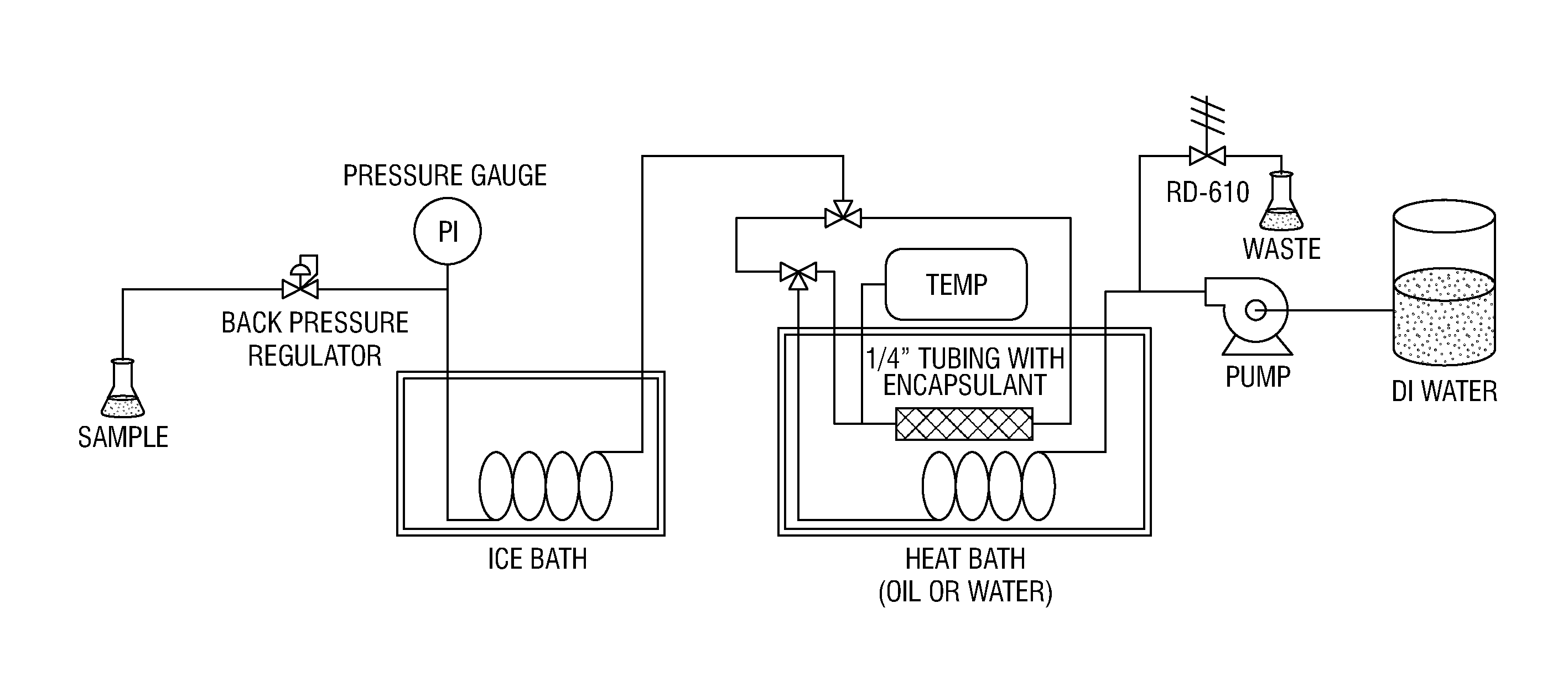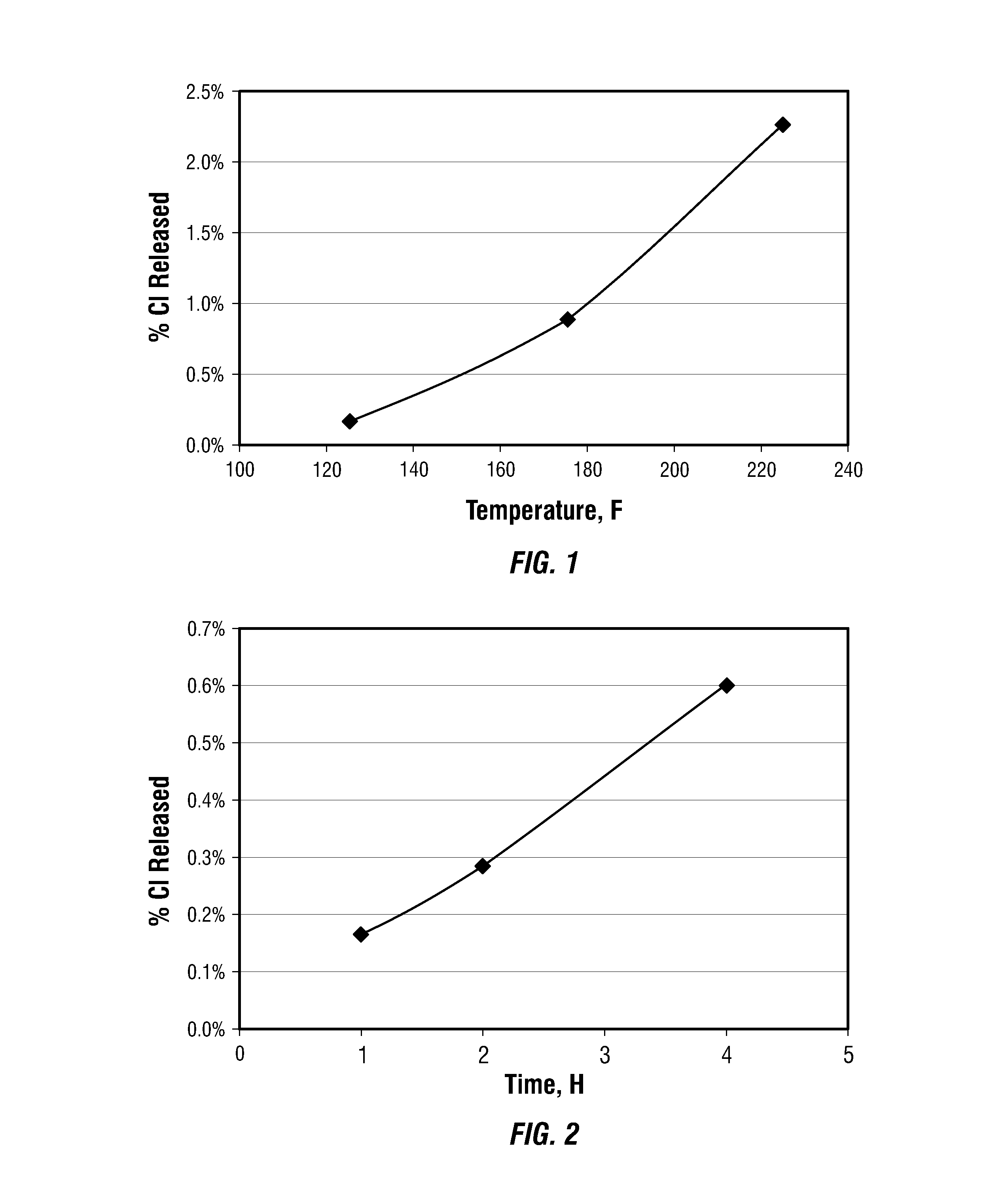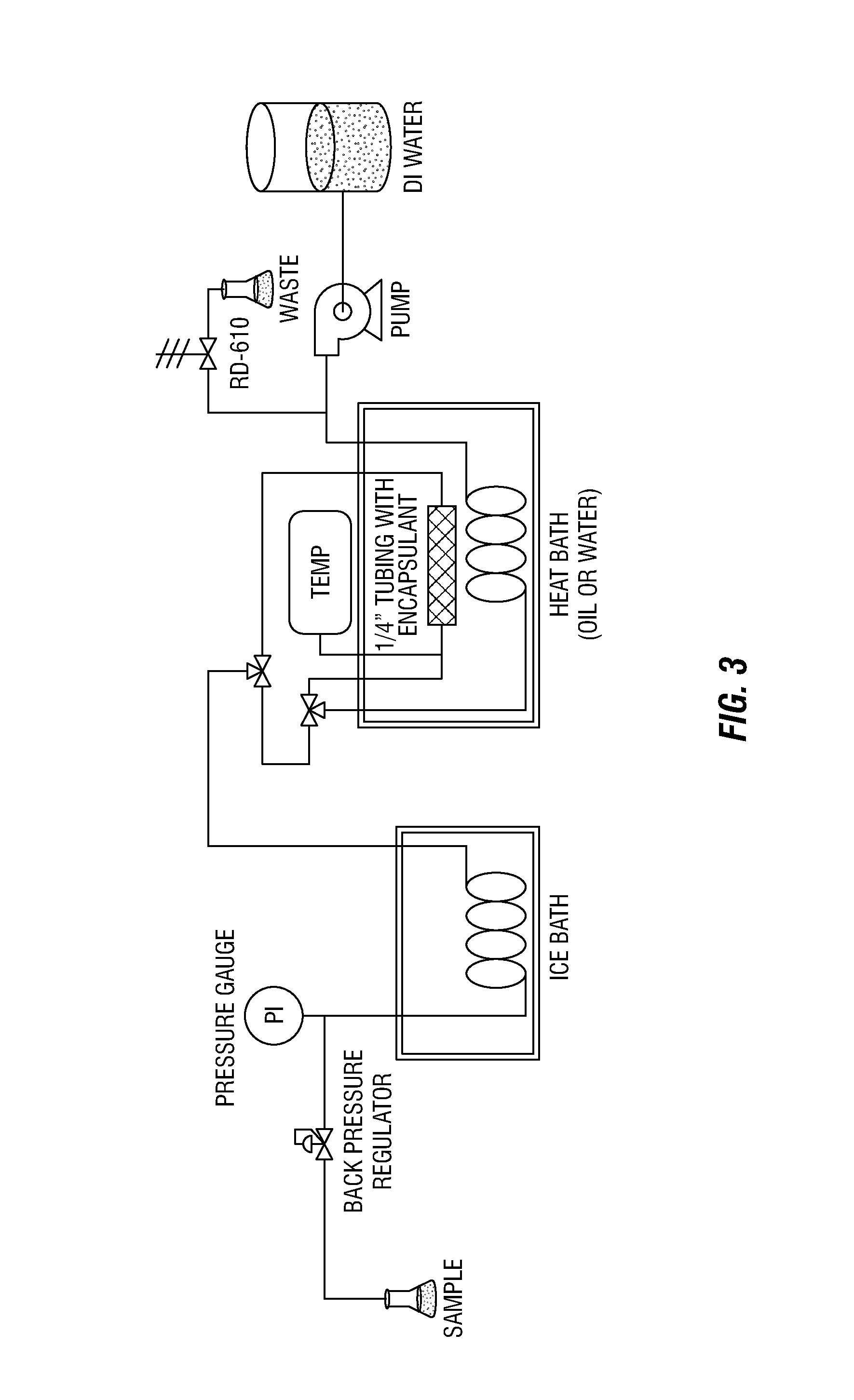Controlled release biocides in oilfield applications
a biocide and oilfield technology, applied in fluid removal, chemistry apparatus and processes, borehole/well accessories, etc., can solve the problems of reducing the efficiency of recovery operation, accelerating corrosion rate, health hazards, etc., and achieves low dosage rate, improved ease of use, and attractive application methods
- Summary
- Abstract
- Description
- Claims
- Application Information
AI Technical Summary
Benefits of technology
Problems solved by technology
Method used
Image
Examples
example 1
Delayed Release of Chlorine from Encapsulated Trichloroisocyanuric Acid
[0079]A sample of trichloroisocyanuric acid, a well known pool water disinfectant, was encapsulated with PVdC. Active content of the encapsulated chemical was 85%. The following procedure was performed: 0.5 grams of encapsulated trichloroisocyanuric acid along with 15 mL of deionized (DI) water were loaded into a series of 20 mL glass vials. The vials were hermetically sealed and placed in a water bath at various temperatures. After a certain period of time, each vial was removed from the bath, quenched in cold water to reduce the temperature of the vial to room temperature, and then each vial was analyzed for total chlorine content. The data obtained after 1 hour of exposure to the above temperature was plotted to generate the biocide release profile against temperature, as shown as FIG. 1. The data obtained at 125° F. (51.7° C.) and various exposure times was used to generate the release profile, as shown in FI...
example 2
Delayed Release of Ammonium Persulfate from PVdC Encapsulation Material
[0080]Ammonium Persulfate (APS) is commonly used as a bleaching agent or disinfectant. A sample of APS coated with poly vinylidene chloride (PVdC) was used in the following example. The core to wall ratio of APS to PVDC was 85% to 15%.
[0081]The Hydrostatic Pressure (HP) Release Profile Apparatus rated to 300° F. and 4,500 psi was used to determine the concentration of APS, the schematic shown in FIG. 3. In operation, DI water was pumped through a heating coil immersed in a water or oil bath. The fluid then entered a piece of ¼ inch tubing (sample holder) filled with glass wool on either end with encapsulated product in the middle. The glass wool kept the product in place. The flow continues out of the heated bath and through a cooling coil immersed in an ice-water bath. Finally, the fluid entered a Tescom regulator where the system pressure was controlled. Flow from the regulator was collected in 50 mL sample con...
PUM
| Property | Measurement | Unit |
|---|---|---|
| pressure | aaaaa | aaaaa |
| temperature | aaaaa | aaaaa |
| solubility | aaaaa | aaaaa |
Abstract
Description
Claims
Application Information
 Login to View More
Login to View More - R&D
- Intellectual Property
- Life Sciences
- Materials
- Tech Scout
- Unparalleled Data Quality
- Higher Quality Content
- 60% Fewer Hallucinations
Browse by: Latest US Patents, China's latest patents, Technical Efficacy Thesaurus, Application Domain, Technology Topic, Popular Technical Reports.
© 2025 PatSnap. All rights reserved.Legal|Privacy policy|Modern Slavery Act Transparency Statement|Sitemap|About US| Contact US: help@patsnap.com



